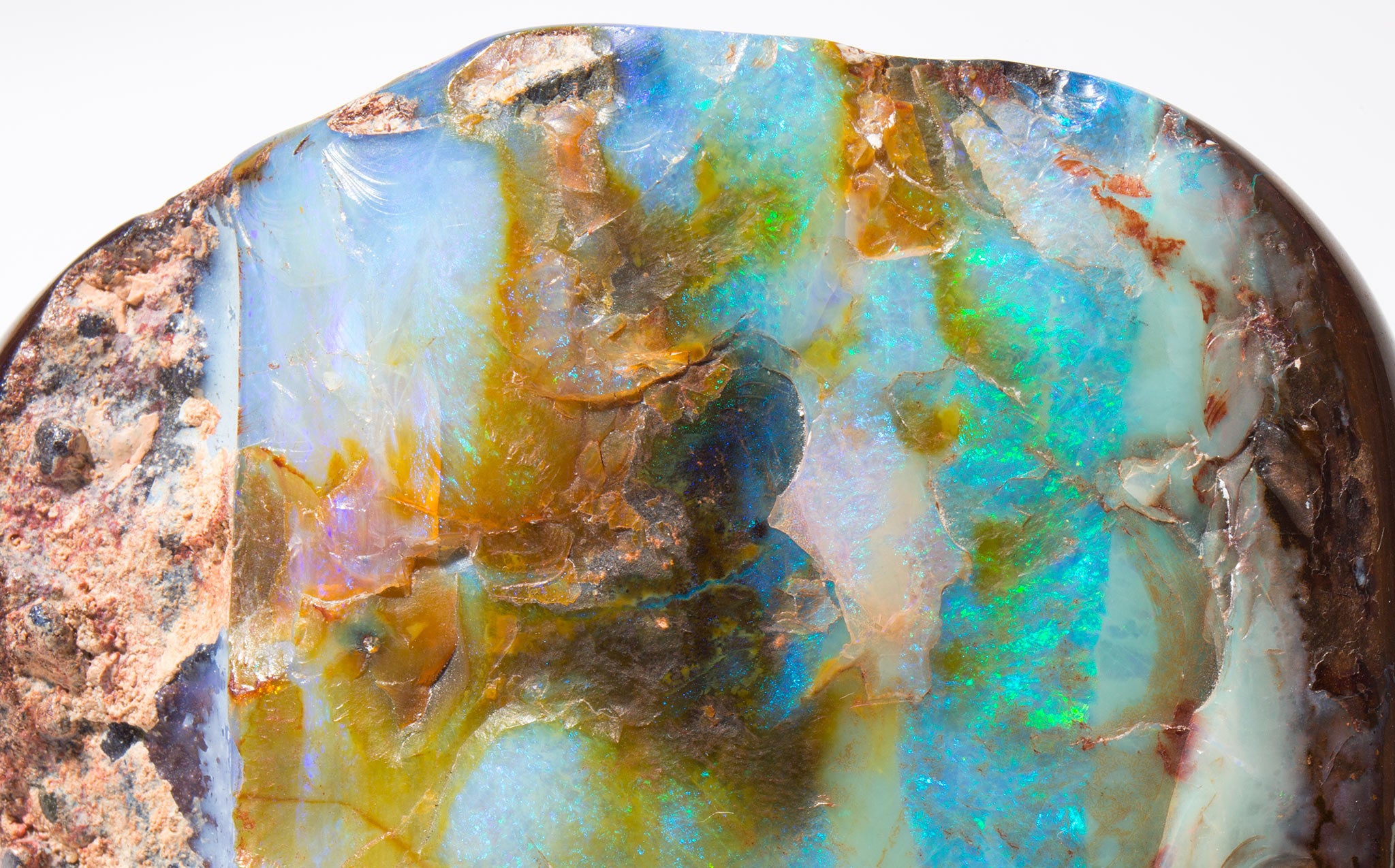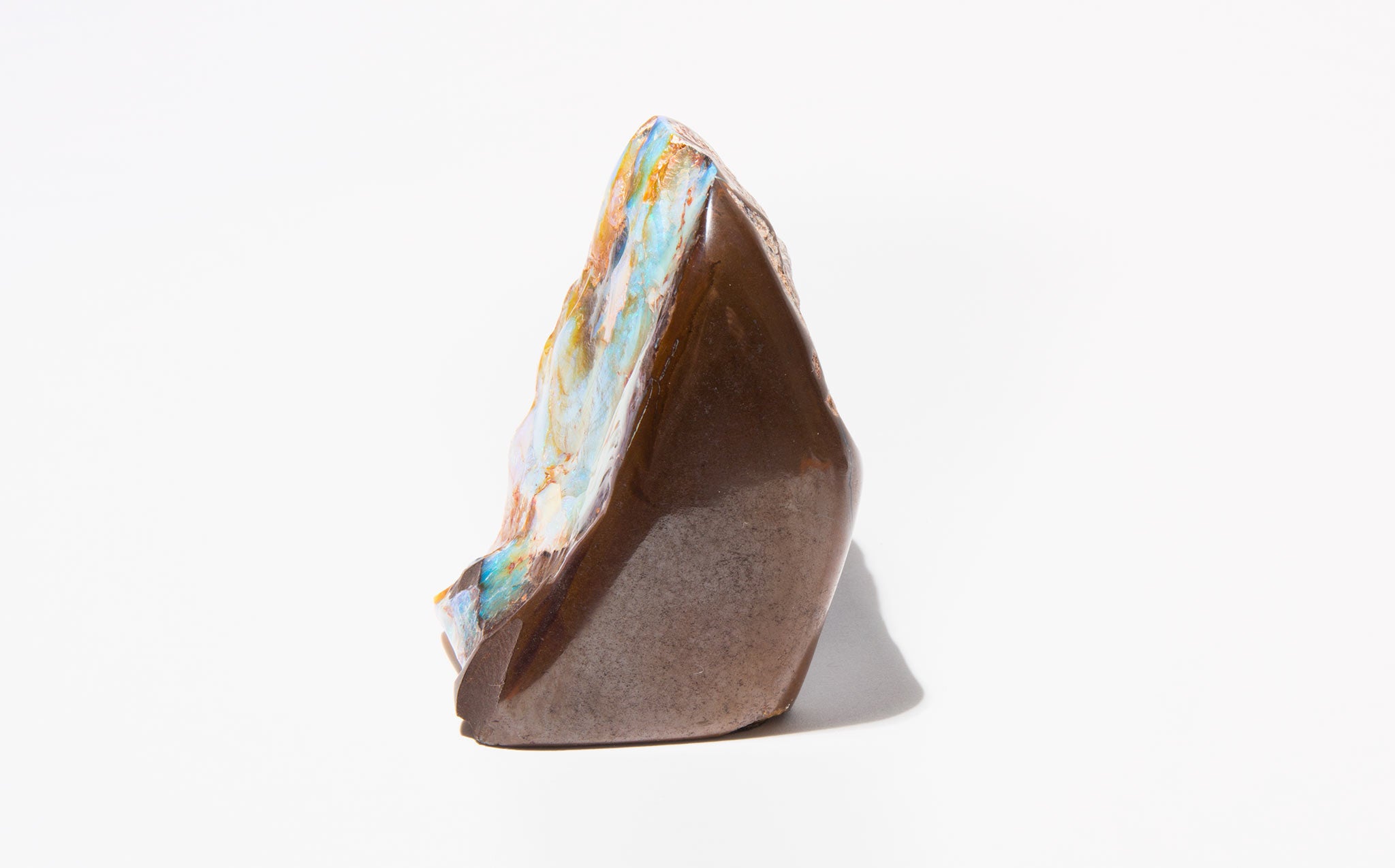Rough, uncut 2000 carat boulder opal.
Throughout most of history, the opal has been regarded as the luckiest and most magical of all the gems because it embodies all of the colors in the visible spectrum. In ancient Rome, the gem symbolized love and hope. Arabic legends say it falls from the heavens in flashes of lightning. The ancient Greeks believed opals were the tears of Zeus and would impart them with the gift of prophecy and protect them from disease. During the middle ages opals were thought to have the power to preserve the life and color of blond hair. In Europe, the monarchs wore opals in crowns and necklaces as symbols of hope, purity and truth.
It wasn't until 1829 when Scottish author Sir Walter Scott published his novel Anne of Geierstein that any negative superstitions were attached to the opal. In the book, Lady Hermione wears an opal thought to have supernatural powers. When it comes in contact with a few drops of holy water, the stone loses its color, Hermione falls into a swoon and by the next day has been reduced to a pile of ashes. Due to the popularity of the book, the opal quickly suffered. Within a year the sale of opals in Europe had dropped by 50% and the opal market was effectively crippled for decades. The English Queen Victoria did much to reverse the gems unfounded reputation. She was a great lover of opals and had a large personal collection that she wore throughout her reign.
1 gram = 5 carats
This is 400 grams
Boulder opal - called a specimen rock
felt on bottom so it doesn't scratch surfaces
$2000 WS - $4000 to $5000 retail
Description
Rough, uncut 2000 carat boulder opal.
Sizing + Info
Felt on bottom so it doesn't scratch surfaces.
Shipping
$10 standard shipping, free shipping on orders of $100 or more






The Opal
Throughout most of history, the opal has been regarded as the luckiest and most magical of all the gems because it embodies all of the colors in the visible spectrum. In ancient Rome, the gem symbolized love and hope. Arabic legends say it falls from the heavens in flashes of lightning. The ancient Greeks believed opals were the tears of Zeus and would impart them with the gift of prophecy and protect them from disease. During the middle ages opals were thought to have the power to preserve the life and color of blond hair. In Europe, the monarchs wore opals in crowns and necklaces as symbols of hope, purity and truth.
It wasn't until 1829 when Scottish author Sir Walter Scott published his novel Anne of Geierstein that any negative superstitions were attached to the opal. In the book, Lady Hermione wears an opal thought to have supernatural powers. When it comes in contact with a few drops of holy water, the stone loses its color, Hermione falls into a swoon and by the next day has been reduced to a pile of ashes. Due to the popularity of the book, the opal quickly suffered. Within a year the sale of opals in Europe had dropped by 50% and the opal market was effectively crippled for decades. The English Queen Victoria did much to reverse the gems unfounded reputation. She was a great lover of opals and had a large personal collection that she wore throughout her reign.